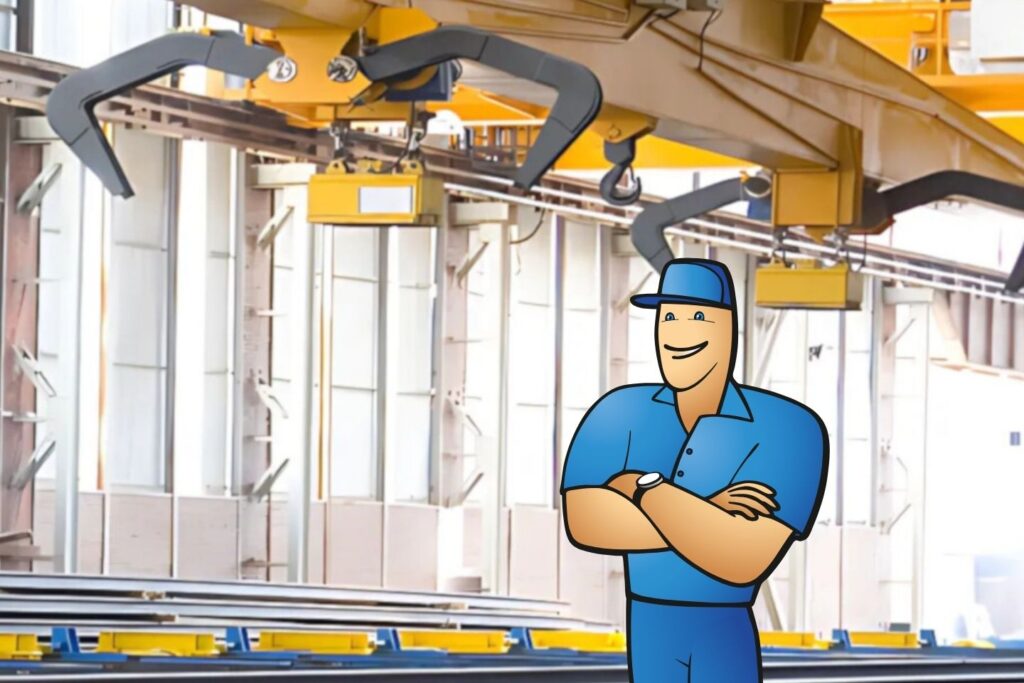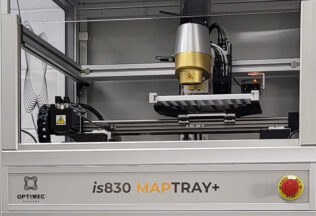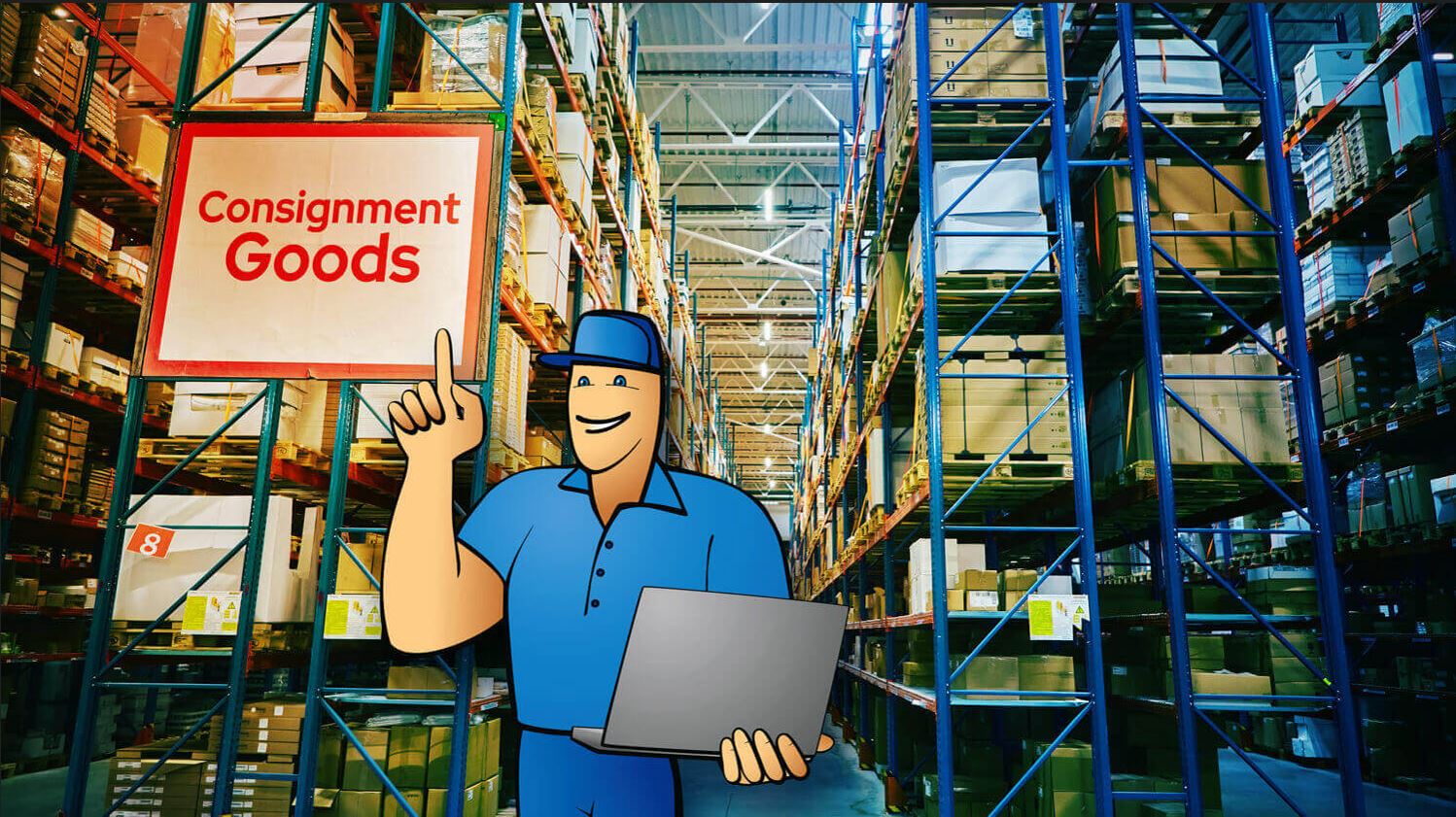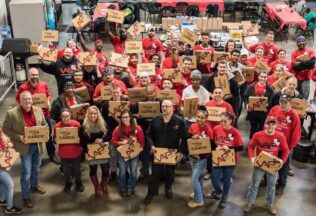Power Supply System Manufacturer Uses Tech to Revive a Fabled Product Line
Dan Klasel couldn’t cope with the discontinuation of a line of mobile power supply systems, so he and his business partner bought it. Now, his team is modernizing it through automation and ERP software.

Reviving a discontinued line of mobile power supply systems
SpanGuard is a power supply system manufacturer from Tioga, Pennsylvania, that builds continuous conductor bar systems for manufacturing sites, amusement parks, dam installations, aircraft hangars, overhead cranes, and other applications where reliable mobile power is required.
While the company itself is barely a year old, SpanGuard’s product line has a long and notable history. Originally designed in the 1960s by US Safety Trolley, it was a pioneering product that brought safe mobile power to a variety of industries. A few years ago, however, the product line was discontinued.
“I had been using the product myself since 1979 so I couldn’t believe they had stopped manufacturing it because it’s such a common application in the field,” says Dan Klasel, President.
Klasel first called the previous manufacturer to try and find parts for the product after they had stopped making it. In the course of that conversation, he asked them if they were interested in selling the company. After going back and forth for several months, an offer was accepted and SpanGuard Corporation was created to bring the product back to life.
“We are now modernizing the manufacturing processes,” Klasel says. “Most of the manual manufacturing has been taken out and we’ve started to automate using CNC systems.”
While Klasel’s co-founder Richard Warriner is a seated member of the Association for Iron & Steel Technology (AIST), Klasel himself used to be a board member of the American Society of Mechanical Engineers (ASME).
“Both of us had been fairly accomplished in our industry and could have retired a while ago,” Klasel says. “But we just wanted to keep doing something.”
With just six employees building a highly complex product, everyone takes on many roles within the company, which in Klasel’s case include process and machine engineering and administrative tasks such as finance.
“Last night, I was sweeping the shop floor,” he chuckles.
Software was a top priority from day one
The amount of work put into the business would be an impossible burden for just six people if everything was done manually. That is why Klasel knew they had to automate the manufacturing process and adopt software to keep track of things. Although spreadsheets are usually the first management system for companies just starting out, he knew that they would quickly outgrow them.
“I firmly believe that if you’re going to implement something, you should do it from the beginning and grow into it rather than trying to stuff a bunch of spreadsheets into a system later,” he maintains.
Klasel already knew which system he wanted to adopt. While on-site at one of his other companies in Florida, he visited a neighboring manufacturer and saw him use MRPeasy to run his business.
“By looking at him, I would not have expected him to know how to run a computer,” he jokes. “And it was amazing that he was able to run his business on this piece of software.”
Klasel says that the decision to adopt MRPeasy was made easier by the fact that in a previous company, he had gone through a whole year’s worth of training to use NetSuite only to hear his peers complain about the complexity of the system when it finally went live. This reinforced his belief that better-known products might not always be better.
“I was looking for something simple and, having seen it work well for an acquaintance’s business, MRPeasy clearly seemed like a good fit,” he says.
Initial setup took only a week
The SpanGuard team approached the implementation head-on. With help from Klasel’s wife, who had worked as an IT Manager at Lockheed Martin, the process was nothing short of smooth sailing.
“Although we had in-house IT help, the system is so user-friendly that even without it, I think we would have managed,” Klasel says.
All-in-all, the initial setup of MRPeasy took the team about a week, after which they had the CRM, HR, and inventory modules up and running.
“We were running the operation on MRPeasy before even opening the doors,” Klasel says.
According to Klasel, the MRPeasy support team has been very helpful and quick to respond ever since they started the implementation, promptly resolving any issues that have come up.
“The tutorials and videos are also wonderful,” he says. “I’ve never had a product with so much information freely available.”
Getting access to key data on the go
With MRPeasy fully embedded into their operations early on, SpanGuard has achieved something every growing manufacturing company strives for: clarity.
“The biggest benefit is having information at my fingertips,” says Klasel. “Whether it’s inventory, invoicing, or procurement, I can find answers in a few clicks from anywhere—even on my phone.”
For a team of six handling everything from customer communication to physical production, being able to access key data on the go is a game-changer. Customer questions—like whether a product is in stock or if raw materials will arrive on time—can be answered on the spot.
“We’ve built our bills of materials on the system and can check inventory to see what’s available or what’s coming in,” he adds. “I could show someone my revenue, receivables, and inventory value in just a few clicks—that’s how fast and user-friendly it is. The hardest part is entering my password.”
Klasel emphasizes that the platform does more than provide visibility. It helps structure the business in a sustainable way.
“It’s forcing us into a discipline that we didn’t have before,” he says. “And that’s a good thing.”
Reliable software that does exactly what it promises
Having had prior experience with larger systems like SAP and NetSuite, Klasel is acutely aware of the downsides of bloated ERP implementations. MRPeasy, in contrast, does exactly what it promises—without getting in the way.
“It’s simple. It doesn’t require more effort than the benefit it provides,” Klasel says. “And that’s not always the case with ERP systems.”
The software’s consistency across modules also means users don’t have to relearn how things work every time they move between functions.
“It just works,” Klasel says. “I don’t want bells and whistles or flash—I want to push a button and get what I need. And that’s what MRPeasy gives me.”
What’s more, the cloud-based platform has proven completely reliable.
“We’ve never experienced downtime,” he notes. “It’s been 100% reliable the entire time we’ve been using it.”
Getting to know the system is easy even for a novice
MRPeasy’s user-friendliness has made a lasting impression, even among team members with no previous ERP experience. Klasel’s assistant, Victoria Hyde, was new to the system and the industry but was quickly able to learn through the software’s extensive help resources and tutorial videos.
“It’s a great program that runs smoothly and is very self-explanatory,” she says. “And support materials are there to help you through everything.”
While Klasel has not used the support ticketing system himself, Hyde has put in around 10 support tickets, all of which have been resolved quickly and clearly.
“The support team has been very responsive and helpful,” she says.
“Victoria’s put in 10 support tickets in more than a year while I come from an organization where we used to put in 10 tickets every two or three days,” Klasel laughs.
MRPeasy is “an omission of headaches”
Klasel encourages other small manufacturers not to wait until things get out of control before investing in systems like MRPeasy.
“Start from the beginning with a system like MRPeasy, so you’re ready to scale when the time comes,” he advises.
And for those still on the fence, he offers a simple demo: “If I were talking to someone running their business on Excel, I’d just take out my phone and show them. In under a minute, I can tell you what my revenue is for the week, how much my receivables are over the next 30 days, and what the value of my inventory is.”
Klasel admits that it is so much easier to describe problems than to describe the absence of them. “But that’s the thing with MRPeasy—it’s an omission of headaches. It allows us to focus on what we need to do without worrying about the system,” he says.
You may also like: Industrial Cleaning Equipment Manufacturer Sees ‘Huge Improvements’ After Implementing MRP Software



